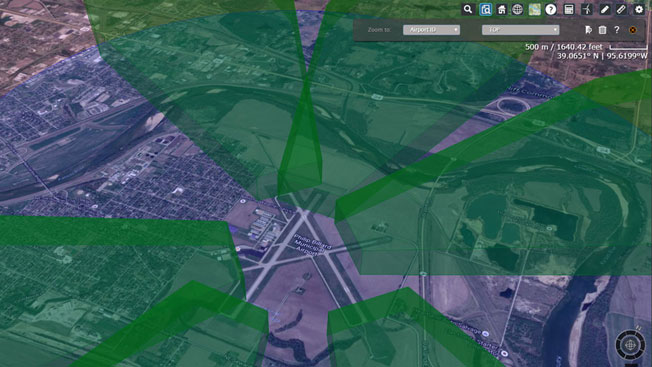Airport Business & Programs

Kansas Airport Improvement Program
Airports serve an important role in the state transportation system.
The goals of the Kansas Airport Improvement Program (KAIP) include:
- Maintain the system's runway condition rating of "very good";
- Minimize surface travel time to air ambulance pick-up locations;
- Improve safety, and;
- Enhance airport and community economic development appeal.
The program is open to public-use airports in Kansas as defined in K.S.A. 75-5061. Projects under this program are solicited annually to preserve or modernize facilities, to design or plan continued development and to improve or add equipment. A key element of the program is a local matching requirement of between 5 and 50 percent, which is determined by project category. This $5 million per year in state funds, combined with local matching funds, results in $5.5 to $6 million in airport improvements per year on average.

Kansas Airport System Plan
KASP
The KASP works in concert with other important planning efforts that include the Federal Aviation Administration (FAA), National Plan of Integrated Airport Systems (NPIAS), KDOT's Long Range Transportation Plan (LRTP), and Kansas Airport Improvement Program (KAIP), plus individual airport capital improvement programs, layout plans, and master plans. The following are the primary objectives of the KASP process:
- Determine those system airports that are most essential to Kansas transportation needs and economic objectives;
- Identify projects that have the greatest potential to improve the performance of the Kansas airport system; and,
- Demonstrate how investment improves the performance of the Kansas airport system relative to established performance measures and benchmarks.